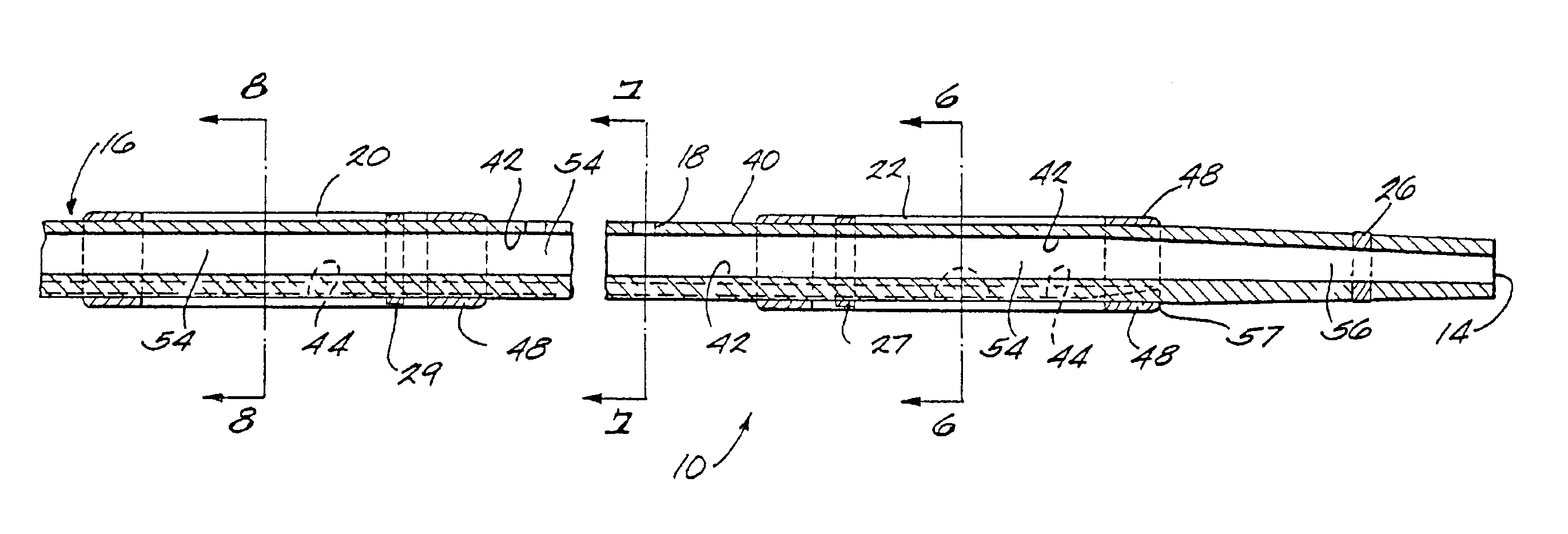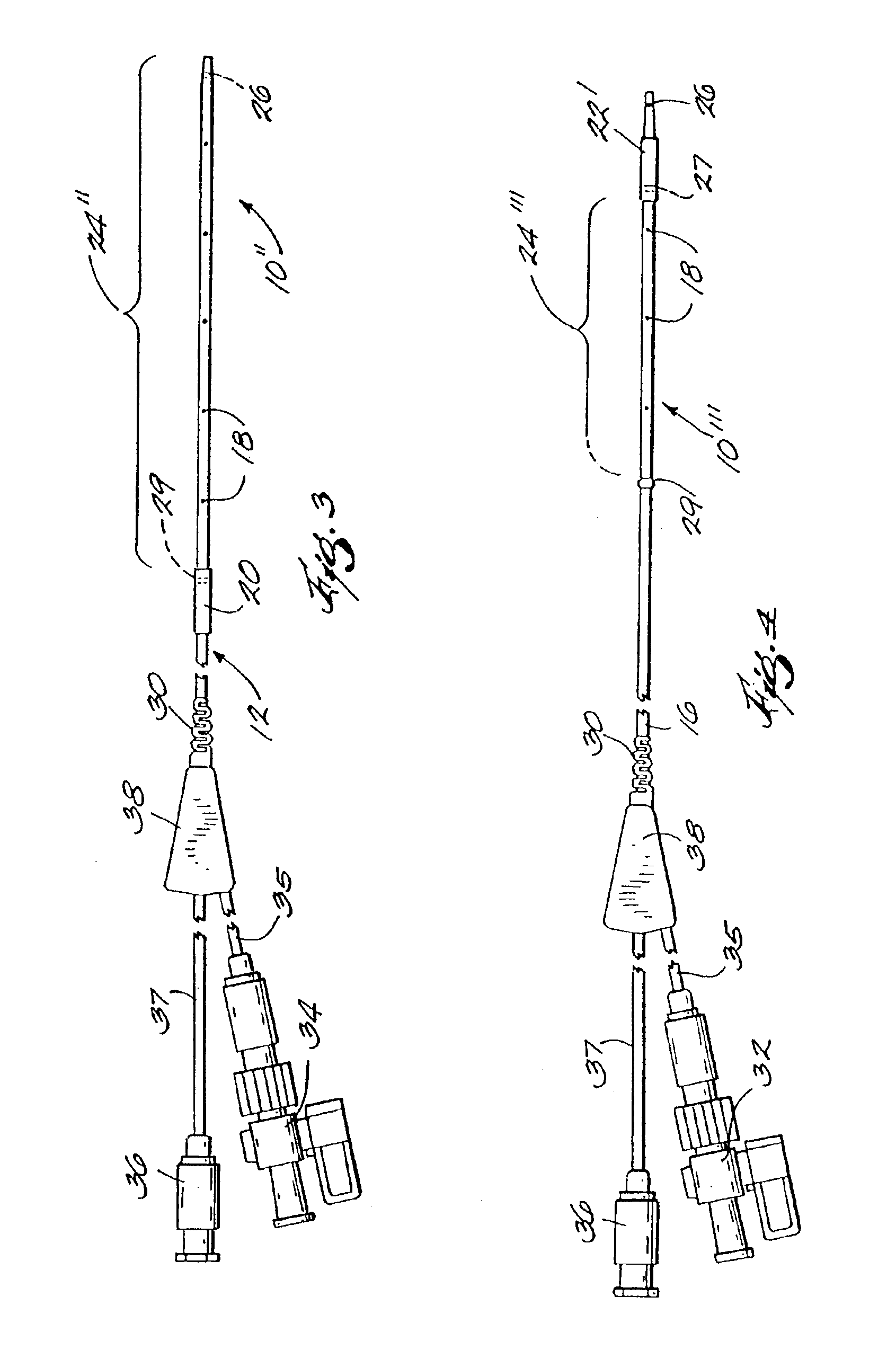Thrombolysis catheter system with fixed length infusion zone
a catheter system and infusion zone technology, applied in the field of catheter systems, can solve problems such as complicated device construction and operation, and achieve the effect of maximizing the options of patients
- Summary
- Abstract
- Description
- Claims
- Application Information
AI Technical Summary
Benefits of technology
Problems solved by technology
Method used
Image
Examples
Embodiment Construction
[0034]FIG. 1 is a plan view of a thrombolysis catheter or catheter system 10 of the present invention. Catheter 10 comprises a cylindrical catheter body 12. Catheter body 12 is flexible so as to be able to negotiate tortuous vascular structures and has distal and proximal ends 14, 16 respectively. For purposes of reference herein, the terms “distal” and “proximal” are determined from the frame of reference of a user. Thus a “proximal” structure or indication tends to be located closer to the user. Catheter body 12 has therein (and defines) a plurality of radial orifices 18. Catheter body 12 also has located on its external surface proximal and distal balloons 20, 22, respectively. Balloons 20, 22 are shown in their deflated state, i.e., substantially as they would appear as the catheter is being deployed within a patient's vasculature.
[0035]Between balloons 20, 22 is an infusion zone or operating segment 24. Infusion zone 24 is the working or operating portion of the catheter system...
PUM
 Login to View More
Login to View More Abstract
Description
Claims
Application Information
 Login to View More
Login to View More - R&D
- Intellectual Property
- Life Sciences
- Materials
- Tech Scout
- Unparalleled Data Quality
- Higher Quality Content
- 60% Fewer Hallucinations
Browse by: Latest US Patents, China's latest patents, Technical Efficacy Thesaurus, Application Domain, Technology Topic, Popular Technical Reports.
© 2025 PatSnap. All rights reserved.Legal|Privacy policy|Modern Slavery Act Transparency Statement|Sitemap|About US| Contact US: help@patsnap.com



